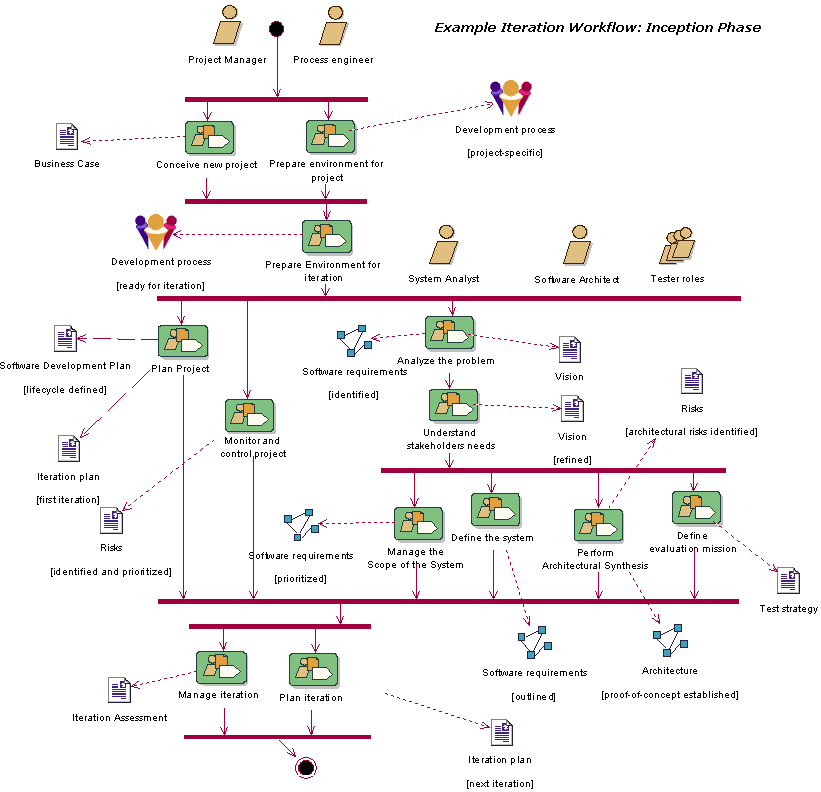Key Concept: Iteration Workflow
Topics: Iteration Workflow
Iteration Workflow

Iteration workflows provide a time based view of the process. One iteration workflow describes a typical workflow within an iteration of a given phase of a software project. Iteration workflows differ from discipline workflows in that the work, described as workflow details, cover cross-discipline concerns. It's a true workflow from the perspective of an iteration in the project.
In UML terms, a workflow can be expressed as a sequence diagram, a communication diagram, or an activity diagram. We use a form of activity diagrams in the RUP. For each phase, an activity diagram is presented. This diagram shows the workflow, expressed in terms of workflow details and their major deliverables. The main roles participating in the workflow details are described as swimlanes in the activity diagram.
Iteration workflows are effective means to describe the lifecycle model of a software development process.

Sample activity diagram, from the inception phase of Classic RUP lifecycle.
There exist many different perspectives onto a software development process, and as such, the preferred organization of the process' content may vary from project to project, and even between individuals on a project. The time based perspective is one of many process organizations. Discipline based is another, and role based is yet another. These different views are often perceived as complimentary rather than competing organizations of process.
